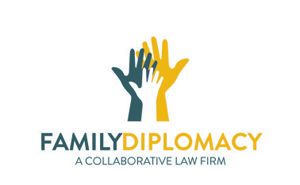Collaborative Divorce: Keeping the Process Out of the Courts
The following passage of an article from the Collaborative Divorce Institute of Tampa Bay discusses a collaborative law agreement, how parties are encouraged to settle rather than institute a court action, and the differences between collaborative divorce and mediation:
Once you decide that Collaborative Divorce is right for you, the first step is for each party and their attorney to sign a Collaborative Law Agreement. This agreement serves as a contract which ensures that the lawyers will act solely as settlement counsel only. By serving as settlement counsel your lawyers are contractually barred from ever going to Court in your divorce case. However, if at some point either party decides it would be more beneficial for the Court to settle a particular matter, you can terminate the Agreement at any time. This helps give you ultimate control of how your case is handled and guarantees an outcome suitable for all parties. It is important to remember that if you or the other party chooses to take a contested matter to the Court both attorneys are fired instantly and can not represent you before the court. Because the purpose of Collaborative divorce is to settle matters amicably and civilly, choosing to take a matter to the court is highly discouraged and may be to the detriment of both parties. This feature of Collaborative Divorce also enhances the possibility of a mutually pleasing outcome and encourages attorneys and clients to work in everyone’s best interest.
The agreement also outlines the expectations of each party and how the divorce process will proceed. Typically, the parties and their attorneys meet in a series of sessions with other necessary financial and health professionals to create a range of quality individualized settlement alternatives that both parties can agree on.
You may be wondering, how is the process of Collaborative Divorce different from traditional court ordered mediation? In mediation, an impartial third party (the mediator) assists the negotiations of both parties and tries to help settle your case. However, the mediator cannot give either of you legal advice or be an advocate for either side. During mediation your lawyer may or may not be present, and the mediator typically drafts the settlement terms and submits them for review to the attorneys. Collaborative Practice allows you both to have lawyers present during the negotiation process to keep settlement as the top priority. The lawyers, who have training similar to mediators, work with their clients and one another to assure a balanced process that’s positive and productive. When there is agreement, a document is drafted by the lawyers, and reviewed and edited by you both until everyone is satisfied. Both Collaborative Practice and mediation rely on voluntary, free exchange of information and commitment to resolutions respecting everyone’s shared goals.
Attorney Adam B. Cordover has completed advanced training in interdisciplinary collaborative family law and is a member of the International Academy of Collaborative Professionals and the Collaborative Divorce Institute of Tampa Bay.
If you wish to schedule a consultation with a collaborative lawyer, call The Law Firm of Adam B. Cordover, P.A., at 813-443-0615 or fill out our contact form.


Very interesting article about collaborative divorce. Thanks for posting!
Collaborative Divorce is basically agreement to settlement between both partners. It is a nice way of settlement; thanks to share this post with us.